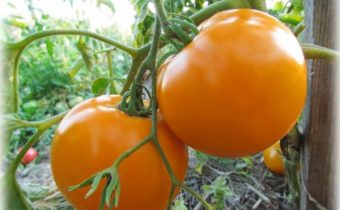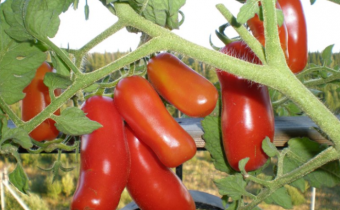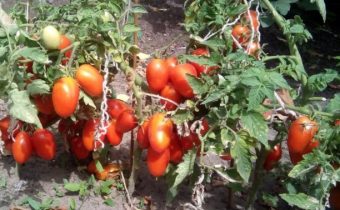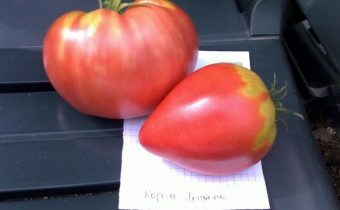Tomato "Red Giant": a productive and productive variety
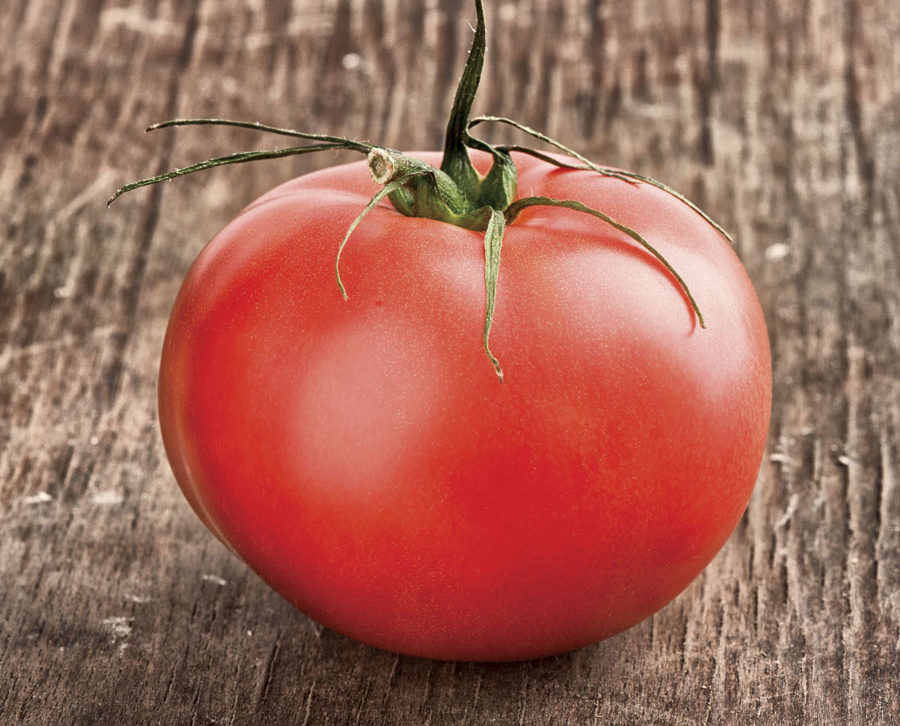
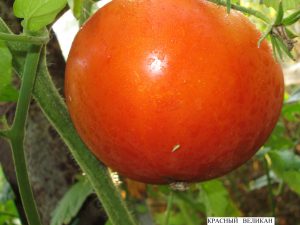 The greatest joy for the summer resident is to get a good harvest of tomatoes for his labors. It is sometimes so difficult to make it - pests, diseases, weather - all these factors can destroy any culture. But if you know the characteristics of a variety, in time carry out all the techniques of agricultural technology, the result will not take long, and the risks will be minimal. Today we introduce you to the Red Giant tomato with its characteristic and description of the variety. How to grow these juicy fruits, so that there are no unpleasant moments, you will find out the article.
The greatest joy for the summer resident is to get a good harvest of tomatoes for his labors. It is sometimes so difficult to make it - pests, diseases, weather - all these factors can destroy any culture. But if you know the characteristics of a variety, in time carry out all the techniques of agricultural technology, the result will not take long, and the risks will be minimal. Today we introduce you to the Red Giant tomato with its characteristic and description of the variety. How to grow these juicy fruits, so that there are no unpleasant moments, you will find out the article.
See also: Tomato "Sweet Million": unusual with simple agricultural techniques
general information
The name of the variety already explains a lot - the tomato is large and has a red color. He was brought out by the agronomists of the company “Zedek”, which has long been on the market, has established itself in front of domestic and not only gardeners. The tomato is intended for cultivation on the street, but in warmer regions, in temperate climates - in film greenhouses, in the north - in warm greenhouses. It is a fruitful and very productive variety, with very tasty and juicy fruits. Growing has its own subtleties.
Description:
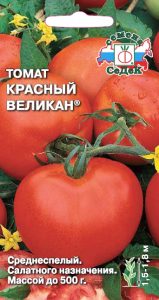
- Indeterminate type, the bushes are quite powerful and tall - up to 1.6-1.8 meters.
- Requires shaping and garter.
- Gives consistently large fruits - weighing 500 grams or more.
- The flesh is fleshy, sweet, many call it watermelon.
- Prefers greenhouse cultivation.
- The root system is powerful, no more than 2-3 plants are planted per square meter.
- Fruits are round and slightly flattened.
- Ideal for making summer salads, juice, pasta, ketchup. Whole fruits because of the size can not close.
- The skin has a red color, the number of seeds in the pulp is average.
- The leaves have a rich green tint, the fruits ripen in the hands.
- It has an average ripening period of 110-120 days.
- It has resistance to a number of diseases, but manufacturers do not talk about absolute immunity.
- Productivity - 7-8 kg. Fruiting long.
Disease and Pest Resistance
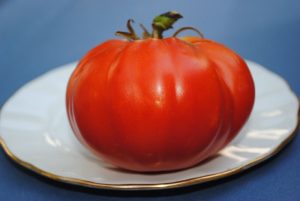 As you already understood, the variety does not have absolute stability. Therefore, you will need to carefully monitor your plantings, carry out preseeding treatment of the greenhouse, seeds, to eliminate the risks. Agrotechnics is very important, it is also worth observing the crop rotation for the variety “Red Giant”, not to plant it after potatoes, carrots, cucumbers, pepper. Moreover, this can not be done if before this plant was sick at this place.
As you already understood, the variety does not have absolute stability. Therefore, you will need to carefully monitor your plantings, carry out preseeding treatment of the greenhouse, seeds, to eliminate the risks. Agrotechnics is very important, it is also worth observing the crop rotation for the variety “Red Giant”, not to plant it after potatoes, carrots, cucumbers, pepper. Moreover, this can not be done if before this plant was sick at this place.
Producers do not state anything about insects, which means they can harm, especially since the variety begins to mature in the period of increased activity of the parasites. So that they could not harm, it is important to prepare the site, plant competently plant neighbors, to conduct prevention.
See also: Tomato Peach Series: Advantages and Disadvantages
Advantages and disadvantages
Advantages of the variety:
- large fruits, juicy, fleshy;
- wide use in cooking and great taste;
- good yield;
- relative resistance to ailments.
Varieties of variety:
- exacting to weather conditions;
- you need to form bushes, tie up, stepchild;
- fruits are not preserved whole;
- there is no absolute resistance to diseases and insects;
- Demanding on soil composition and care.
Of course, the tomato “Red Giant” in its characteristics and description of the variety has disadvantages, but the advantages are substantial. If you like to grow crops in the garden, do a lot of blanks for the winter, then this is a very good variety for you. If you are a beginner, then go responsibly to the study of all the nuances of agricultural technology.
Features of growing varieties
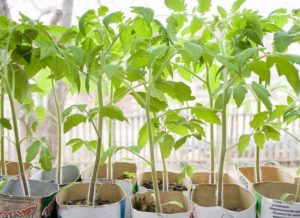 Presowing treatment for tomato is very important. Seeds need to check for germination in salt water, surfaced remove. Before planting for 3-4 days, the seed can be soaked in manganese solution for an hour, then washed and dried. And one day before sowing, soak the seeds in aloe juice for 2-3 hours - this stimulates the immune system and accelerates germination. Crops begin from the end of February and the beginning of March according to the lunar calendar.
Presowing treatment for tomato is very important. Seeds need to check for germination in salt water, surfaced remove. Before planting for 3-4 days, the seed can be soaked in manganese solution for an hour, then washed and dried. And one day before sowing, soak the seeds in aloe juice for 2-3 hours - this stimulates the immune system and accelerates germination. Crops begin from the end of February and the beginning of March according to the lunar calendar.
Soil is best mixed purchased and from the garden, as the variety is picky about the composition. The proportions 1/1 will do, but you should definitely pickle the soil with boiling water with manganese, after drying it. Plant seeds in a common tray or individual cups, which is more convenient under the film. During germination the temperature is needed at 26-28 degrees, after 23-25 degrees. In the phase of 3-4 leaves, the seedlings are fed with urea.
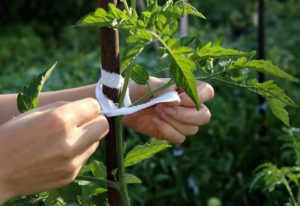 Transfer to the greenhouse and greenhouse is carried out from mid-May, when it became warm even at night - from +15 degrees. Prepare the soil and the entire greenhouse is treated with antiseptics. About crop rotation, we have already said. Humus, ashes are introduced into the soil, they are dug, after the complex preparation into each well. Be sure to spill the boiling water. There are 2-3 pits per meter. Since the variety is demanding of moisture, it is better to mulch the beds.
Transfer to the greenhouse and greenhouse is carried out from mid-May, when it became warm even at night - from +15 degrees. Prepare the soil and the entire greenhouse is treated with antiseptics. About crop rotation, we have already said. Humus, ashes are introduced into the soil, they are dug, after the complex preparation into each well. Be sure to spill the boiling water. There are 2-3 pits per meter. Since the variety is demanding of moisture, it is better to mulch the beds.
To get the maximum yield, stepchild all shoots, but leave one in the upper fork - this is the second stem. Every 10-14 days they make supplements - manure is diluted 1/10, the next time they are fed with complexes - “Superphosphate”, “Universal”. So alternate the entire growing season. For the prevention of diseases, spray once a week with a weak solution of manganese, to stimulate flowering "Ovary", insects are driven by infusions of spices.
See also: Chinese way of growing tomato seedlings
If you follow these recommendations, then you will not have problems. Getting a good harvest is a reality, not a myth.
Video: Caring for tomatoes. First important steps


